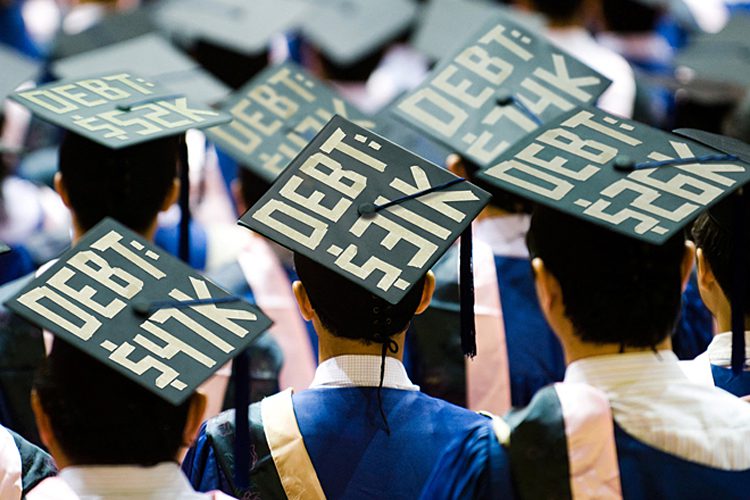Generally, the privately funded colleges have higher brand values, thus, they are able to get higher pay packages for their recruitment programmes. Since a student is able to get a higher salary after graduating from there, the colleges are able to charge a steep fee. The steep fee is not within the capacity of many of the students. That is when the student loan kicks in, explains Tarun, in the weekly column, exclusively in Different Truths.
In ancient times, Takshashila and Nalanda were world-renowned institutes of learning. The admission to these institutions was both through merit and royal patronage. The king used to donate lots of funds to them, while the meritorious students from the humble background were taught without fees. They were supposed to pay guru dakshina after they completed the course.
Fast forward to modern times. The state funding of education exists, along with private educational institutes. There are colleges that are charging virtually next to nothing. While there are colleges with higher fees, running into lakhs of rupees. The colleges run their campus recruitment programmes. Generally, the privately funded colleges have higher brand values, thus, they are able to get higher pay  packages for their recruitment programmes. Since a student is able to get a higher salary after graduating from there, the colleges are able to charge a steep fee. The steep fee is not within the capacity of many of the students. That is when the student loan kicks in.
packages for their recruitment programmes. Since a student is able to get a higher salary after graduating from there, the colleges are able to charge a steep fee. The steep fee is not within the capacity of many of the students. That is when the student loan kicks in.
The banks are eager to give loans if a student so wishes. The calculation is that once the student finishes the studies, and starts earning, the loan would be paid off. This is all good. But consider for one moment that we are betting our future on the basis of present conditions. Consider the case that the student is not recruited in the desired position. Then the loan has to be paid off. But, the student is not so well off to pay this off. What happens? Stress, of course.
Any loan has a risk built in. There is a payoff matrix for the risk. This means, that anybody who is taking the loan, should be aware of the risk and expected returns, and then take an optimum decision. My case is, a student is not experienced enough to calculate whether the risk-reward ratio is favourable or not for taking the risk of the loan. In any case, the student loan would be in direct proportion to the fee charged by the institution. And that fee is determined by the institution and not the student. So, a student has limited choices to accept or refuse the loan.
The USA is the pioneer in education, and debt to fund that. Let’s see how it fares there. As of 2016, the  total student loans outstanding in the USA were $1.3 trillion! More than 7 million, or 11.2% debtors are defaulting on their payments after they graduate. A typical student loan has a repayment period of 10 years or nearly 1/3rd of the earning period of an average person.
total student loans outstanding in the USA were $1.3 trillion! More than 7 million, or 11.2% debtors are defaulting on their payments after they graduate. A typical student loan has a repayment period of 10 years or nearly 1/3rd of the earning period of an average person.
One more issue concerning student loan is the increase in tuition fee by the institutes when a loan is easily available. As Cato Institute economist Neal McCluskey explained in a 2012 article, “the basic problem is simple. Give everyone $100, and colleges will raise their prices by $100, negating the value of the aid.” So, if a student loan is available, the chances are that the colleges may increase their fee by a similar amount.
Many students there report having to delay important decisions in life because of loan is taken to finance their education. They may have to wait to marry, or raise a family, or even to buy a house. It may even affect job choices.
There are certain things that affect every individual who takes a loan. He is likely to take more risks in financial decisions to repay that loan at the earliest. There are many aspects of psychology that get altered due to a loan.
 In India, a student loan is not such a big issue. But with UGC grant coming down, the colleges are likely to be raising their fees. In such a case scenario, we are likely to be seeing student loan on the increase. So, the banks would be getting an additional business stream.
In India, a student loan is not such a big issue. But with UGC grant coming down, the colleges are likely to be raising their fees. In such a case scenario, we are likely to be seeing student loan on the increase. So, the banks would be getting an additional business stream.
This column does not judge whether a student loan is desirable or not. The purpose here is that a student should be aware of the nuances before going for a loan to finance higher education. A serious weighing of pros and cons would go a long way in helping achieve life goals and make a more planned repayment plan.
©Tarun Gupta
Photos from the Internet
#StudentLoans #GovernmentHelp #StudentLoansInUSA #StudentLoansInIndia #Loans #UnderstandingStudentLoans #HowStudentLoansHelp #ResultOfStudentLoans #BarefootEconomist #DifferentTruths






 By
By
 By
By

 By
By
Eye opener . education is business from prep to phd. Sometimes u feel it managed by white collared mafia